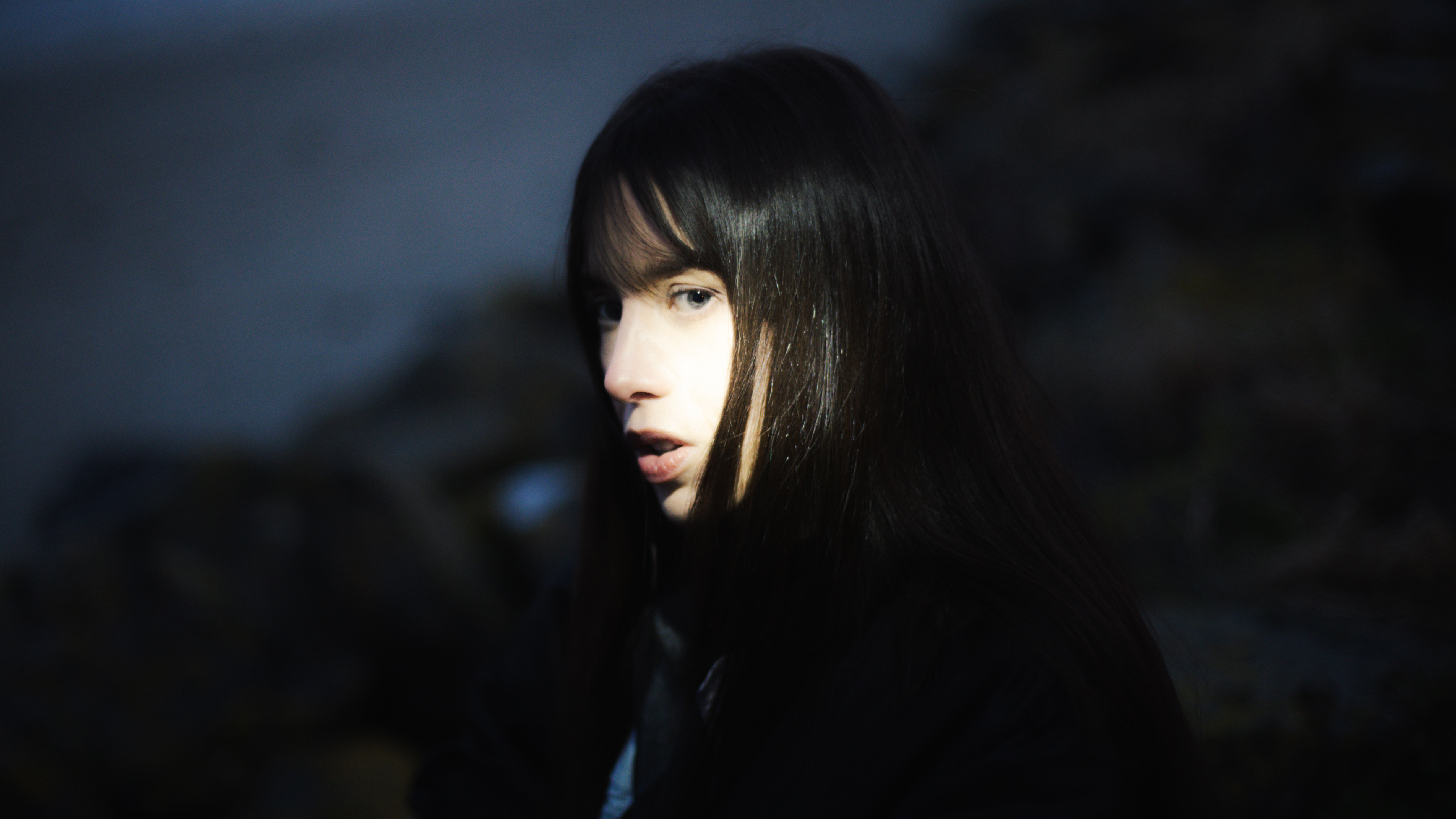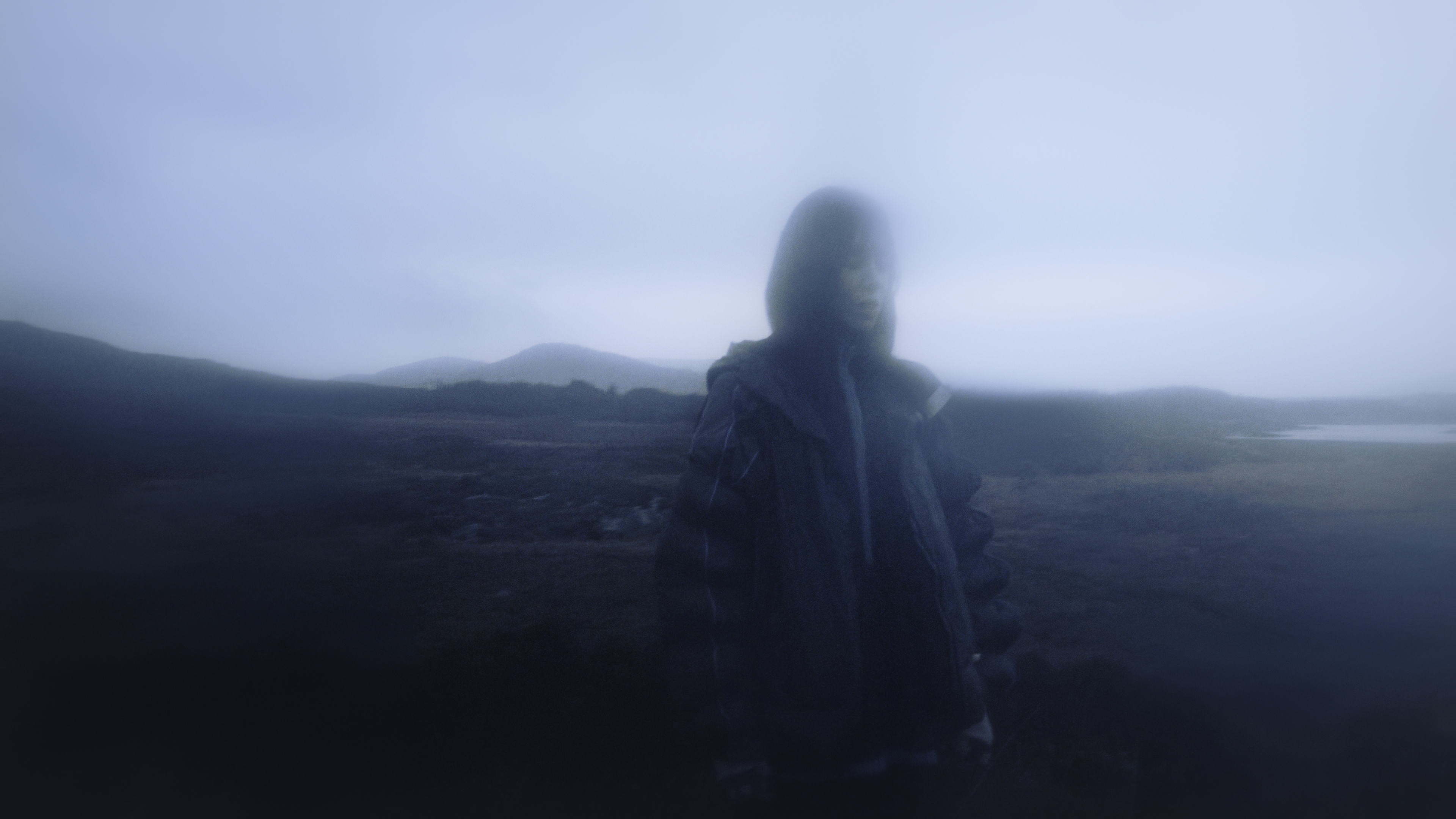“Ableton allows me more room for playful experimentation - it’s more creatively fulfilling than Logic”: Maria Somerville on the DAWs, uilleann pipes and vintage Korg drum machines behind new album Luster
Danny Turner speaks to Maria Somerville about how collaboration and a longing for home shaped the dreamlike atmospheres of her sophomore full-length

By the time Maria Somerville began work on Luster, her debut LP for 4AD, she’d been living away from the picturesque town of Connemara on the rugged west coast of County Galway.
It was in Dublin where the unassuming producer began patiently developing her atmospheric signature sound on the 2019 debut LP All My People – with its gusty ambient electronics and sparse guitar, shaped by memories of former windswept landscapes.
The album garnered immediate critical praise, leading Somerville to play extensive live shows at home and abroad alongside a collective of players from Dublin’s DIY music scene – collaborations that would later become essential to her compositional growth. Before long, Connemara would come calling once more, with Somerville settling into a house near where she was raised, overlooking the tranquil beauty of Lough Corrib.
Employing a simple setup, work commenced on Somerville’s second album, Luster, recorded largely in her living room studio and residencies on the island of Inis Oírr. It was here that long-time friends and new musical allies were invited to collaborate. Deepening the album’s intimate atmosphere, Somerville’s use of guitar, synths, and traditional instruments evokes the immersive textures of ‘90s shoegaze.
What drew you to the world of music, and was your initial approach acoustic, electronic or a combination of both?
“My introduction to music was through my dad and his brothers singing at home and in local pubs when I was a kid. They used to sing these unaccompanied blood harmonies, which were incredible, and that was a really powerful and cathartic experience. I used to sing Irish ballads a lot, probably to the point of annoying them!
“My brother was in cover bands and taught me to play guitar, but I didn’t start writing music until I did a sound engineering course in Galway. Before that, I was just doing cover versions at home, but the course introduced me to using Logic, an interface and a mic, which is when I began layering vocals and experimenting with sounds.”
Want all the hottest music and gear news, reviews, deals, features and more, direct to your inbox? Sign up here.
What made you take that course in the first place, if you hadn’t yet started writing?
“I was definitely interested in sound and wasn’t sure if I wanted to go into live sound or something else, but the course covered a bit of everything and it wasn’t until I was in the midst of it that I started to develop a deep interest in sound design. Around that time, I remember seeing an Irish musician in Galway called Katie Kim. Prior to that I was used to watching indie bands, but Kim was playing solo with a loop pedal and I found her nonlinear arrangements mind-blowing. That experience definitely opened my mind to new approaches.”
Your engineering course introduced you to Ableton. How did that reshape how you thought about music-making?
“I loved it. It was daunting at times, but really informative and creatively fulfilling compared to Logic, which felt more linear. Ableton allowed me more room for playful experimentation. I started learning about mixing, EQ and compression, which deepened my understanding of how sound works. I didn’t begin writing conventional songs - I was experimenting, and probably making some terrible things at first, but Ableton gave me the space to learn. A few years later, I returned to a simpler approach using guitar and voice to start the songwriting process.”

You moved from Galway to Dublin, but it wasn’t long before you returned to Connemara. Was something pulling you towards home?
“I loved my time in Dublin and found myself collaborating with musicians on tracks that had more of an experimental leaning with friends who had gear in that kind of world. There were seven of us and we released an album called Princ€ss on a label called wherethetimegoes, but when the pandemic hit things went stagnant.
“I went back to Connemara thinking the move would be temporary but started to feel very content because I suddenly had the time to follow my ideas, which can be a rare thing. I just felt I could explore my ideas more deeply and collaborate with other musicians who were around, and that openness really influenced the spaciousness of the arrangements on my new songs. I began by collecting lots of field recordings using a Zoom or voice memos while I was at home in Connemara, but most of it didn't make it on the album.”
You worked with quite a few musicians on Luster. Did you have an instinctive desire to collaborate or did their eventual inclusion grow from unplanned jamming sessions?
“It was mostly spontaneous. Some tracks, like Halo, stayed close to my original demos, whereas I felt others like Garden or Projections needed other people to bring them to life. I suppose that with my technical skills, I can only take things so far and a song will either stay as it is because there's some kind of magic to it or won’t, but there are certain people that I really wanted to work with.
“For example, my friend Róisín Berkeley plays harp and it was amazing to be able to record such a beautiful instrument for the track Réalt. We initially recorded it at my house on an SM7B vocal mic, but for the final part Róisín recorded herself at home and sent the stems back to me remotely.”
Who else did you find yourself working with?
“I worked with Henry Earnest and Finn Carraher McDonald at my studio in Connemara and we also did some sessions in Dublin together. Then we had Ian Lynch from the band Lankum on the uilleann pipes – it was lovely hearing the instrument on its own, even without the track.
I wouldn’t say it was consciously important to mix traditional instruments – I feel that kind of thing is sacred and I’d be wary of forcing them into the music
“Some of the other collaborations were more remote, like Suzanne Kraft who played a big part on the track Garden playing bass and drums. I guess that process was based more on trust and intuition, but it came out great. The album was mixed with Gabriel Schuman in New York because I loved all the work he’d done previously. I never realised how much a mixing engineer could help bring everything together until I started working with Gabriel - he’s so talented and intuitive.”
Is there a lyrical or conceptual theme running through Luster?
“The themes are time and water in relation to the natural world and my environment. That wasn’t something I set out to do; it was only afterwards that I linked those themes and realised I was drawn to writing about them. I usually start with a guitar or synth and then a melody will come, and the lyrics – so the vocal’s a result of phonetics. On tracks like Halo or Réalt, the lyrical themes inspired the arrangements and the musical contributions that people made seemed to bounce off that.”
Would you say that you intentionally tried to embed traditional Irish instruments into your music?
“I wouldn’t say it was consciously important to mix traditional instruments – I feel that kind of thing is sacred and I’d be wary of forcing them into the music. It’s more of a natural gravitation, but I love instruments like the uilleann pipes, which feel alive and breathing.
“I’ve been a big fan of Ian Lynch’s solo work, as well as his work with Lankum and One Leg, One Eye and love the trance of the uilleann drones, which felt like a natural fit for the track Violet. The experience of recording this album in the studio was great because the process behind All My People was much more introspective - I feel grateful for these types of collaboration.”

Your earlier releases sound different to Luster, which is much more guitar-oriented…
“It was more about returning to my roots. I started with guitar and voice, so it felt natural to go back to that, but I’m still experimenting with guitar sounds and might shift things again for the next record.
“I mostly play electric guitar on a Japanese-made Fender Jaguar from the '90s. Basically, I was doing a gig for the first album, wanted to buy a guitar and the engineer told me he had one that he’d let me use for the gig. I loved the Fender and ended up buying it because I liked using the whammy bar [laughs].”
Do you work from a home studio?
“I have a minimal home studio setup, with an interface, classic Genelec monitors and some VSTs that I use for vocal layering. I use pedals for distortion mostly - a Walrus reverb, fuzz and some classic Boss delays, but I’ll also use Waves plugins for processing.
“Throughout the process of making the album, I had access to various studios in Dublin through the label. That gave me access to gear I wouldn’t typically have at home, like the Korg Stage Echo, which has such a warm sound, or the Soma Laboratory Lyra-8 synthesiser, which is really nice for making drones.
“When I was renting a space in Dublin, my friends let me use their studios a few times a week, so I had access to a Yamaha DX7, outboard hardware and some nice microphones, but I’ve also been using a lot of plugins for effects processing to make that side of things easier to manage.”
Your music could be categorised as shoegaze. Are you comfortable with that label - or any label?
“I get it. There are elements of that sound – especially since I started returning to more guitar-based textures, but I listen to a wide range of artists, like Pauline Oliveros or Éliane Radigue, and I’m always experimenting. The genre tag is fine, but I wouldn’t say I’m aiming for a particular label. I remember hearing My Bloody Valentine’s Loveless when it came out - I guess that was very new at the time and influenced a lot of people.”
You mentioned the track Violet, which is acoustic yet ends up sounding like a big creaking machine. How was that track constructed?
“That came from an old drum machine I found online called the Mini Pops – I think it’s made by Korg. It kind of dictated the machine-like rhythm and tone of the track – a kind of monotonous joy [laughs], so I kept it in the final recording.
“I started Violet with my friend J. Colleran, who provided the synths, but it’s just a combination of drum machine, guitar and a VST to create the melodic arpeggio. It had a few versions before we landed on the final one, so it’s hard to remember how it came together - maybe we’ll release the other versions some time.”
You previously mentioned possessing a library of unused field recordings. Do you intend to use them on future projects?
“I recorded quite a lot of field recordings thinking they’d feature more prominently on the album, but they didn’t make sense for a lot of the songs and I've been asked to do work with some Irish artists for art-based stuff related to film scoring work. It’s not the classic way of releasing material, but being able to experiment in that way is something I'm interested in doing more of, as well as continuing to collaborate with others.”
You must confirm your public display name before commenting
Please logout and then login again, you will then be prompted to enter your display name.